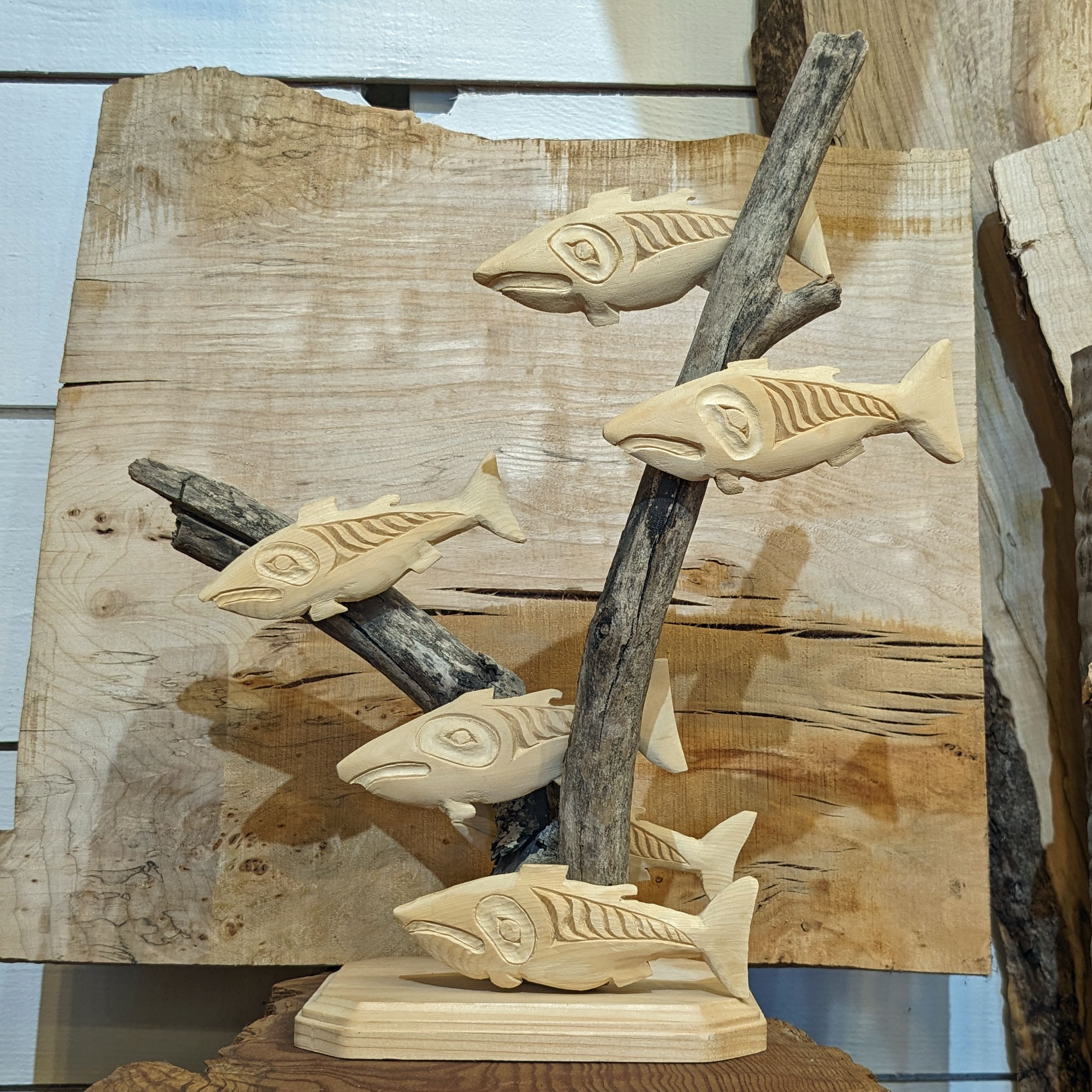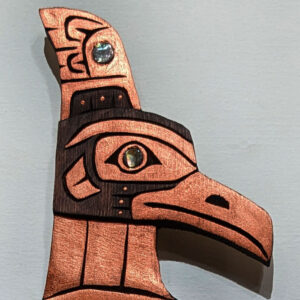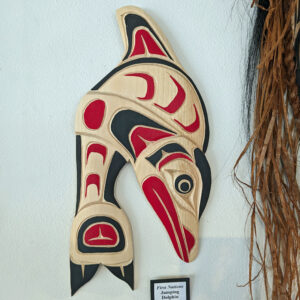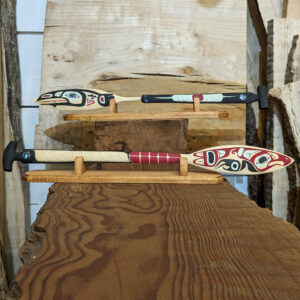First Nations “Grouse Dancer” Sculpture
$2,250.00
Kwakwaka’wakw First Nation Grouse Dancer sculpture measures 17 inches for wingtip to wingtip, 12 inches high and 7 inches deep. Incredibly detailed carving and painting everywhere. Beautiful shades of blue, rust and gold evoke the pride and beauty of the male courting Sage Grouse and his forceful dance. The dancer’s wing tips and edges, and his topknot, are painted cedar raffia. He stands on a painted platform base.
Really just a wonderful piece! Priced at $2250.
The artist is a member of the Kwakwaka’wakw First Nation, based in Alert Bay on Vancouver Island, British Columbia, Canada. Born into a very important carving family in 1974, the artist wasted no time taking on the mantel of greatness from his uncles, mother, and extended family members all excelling in their artwork.
Today his pieces are collected worldwide. His style is a distinctive fusion of traditional and contemporary and is easily recognizable for extremely high quality. It’s our honor to present this piece at Forest Gems.
The dancing grouse has primal connection to the land. The Grouse not only matters as an indicator of our environment’s health. It forms a primal connection to the land and its inhabitants for centuries.
It needs space and protection: Ideally, a lesser prairie-chicken needs 25,000 contiguous acres of appropriate habitat to meet its breeding, nesting and brood-rearing needs to thrive.
Survival of the species is important both environmentally and culturally.
The bird is the top indicator of the ecosystem’s health and, as the largest upland game bird, fed humans for hundreds of years.
Some words about the dance’s origin:
A young man with a wife and two children was hunting for food but found none all week. As he prayed, he went into the buffalo grass and heard a pitter-patter. Parting the grass, he saw two male prairie-chickens dancing and fighting to win the female who watched them. As she chose her mate, the hunter’s arrow took his life.
The hunter prayed over the evening meal and thanked the bird who gave his life to nourish the family’s bodies. That night the bird’s spirit came to him in a dream and told the man that his people must honor the prairie-chicken going forward by performing the dance he would teach him.
Dancers today perform a variety of versions of that original dance – old-style, contemporary and midrange – but all tell the story of the Grouse.
(Adapted from the Journal-Record)








